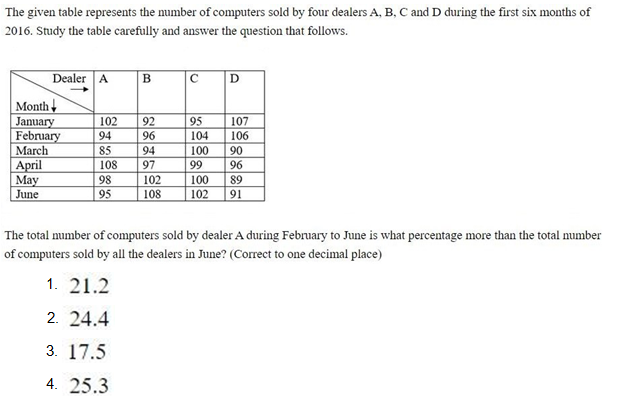Question
If (y/5) = 11/(z+1). Value of 'y' is root of
p2 - 10p + 25 = 0. Quantity I: Value of 10z. Quantity II: 100 In the question, two quantities I and II are given. You have to solve both the quantities to establish the correct relation between Quantity-I and Quantity-II.Solution
ATQ, The quadratic equation is p2 −10p + 25 = 0. Solving for p:
Use the given relation to find 'z'.
From (y/5) = 11/(z+1) =
Calculate Quantity I = Quantity I = 10z = 10 × 10 = 100
Compare Quantity I and Quantity II = Quantity I = 100 and Quantity II = 100
Hence, Quantity-I = Quantity-II or No relation .
The number of students passed in college A is what percent (approximately) the number of student passed in college C? (During all the given year)
Find the ratio between the number of children visiting Buxa Tiger Reserve and Betla National Park together.
What is the average number of women visiting all the Parks together?
The total number of children visiting Kanha National Park is approximately what percent of number of children visiting Indravati National Park?
What was the ratio of the total number of students passed and failed in college C (during all the given years?

If the number of cars produced by Company P increased by 20% in 2023 compared to 2022, how many cars would be produced by Company P in 2023?
In 2021, what is the difference between the number of cars exported by Company P and Company R ?
What is the difference between the total number of orders who were not delivered by Jabong and Myntra together and that of who were not delivered by Fl...
What is the approximate average number of students failed in college C in during all the given year?


